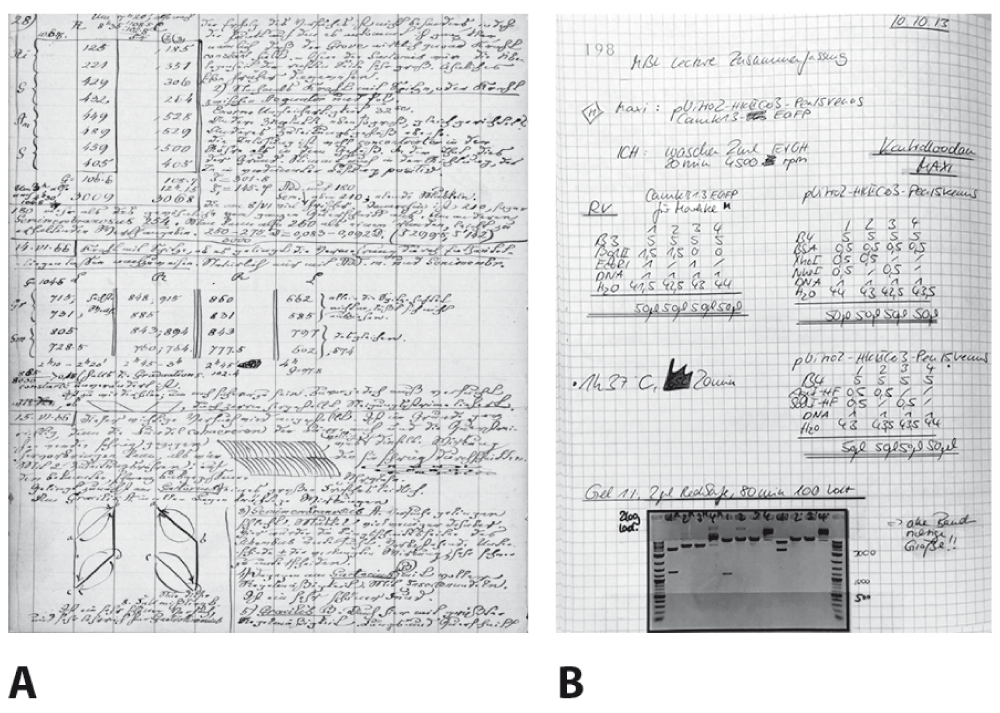Difference between revisions of "Template:Article of the week"
Shawndouglas (talk | contribs) (Updated article of the week text.) |
Shawndouglas (talk | contribs) (Updated article of the week text.) |
||
| Line 1: | Line 1: | ||
<div style="float: left; margin: 0.5em 0.9em 0.4em 0em;">[[File:Fig1 | <div style="float: left; margin: 0.5em 0.9em 0.4em 0em;">[[File:Fig1 Dirnagl F1000Research2016 5.gif|240px]]</div> | ||
'''"[[Journal: | '''"[[Journal:A pocket guide to electronic laboratory notebooks in the academic life sciences|A pocket guide to electronic laboratory notebooks in the academic life sciences]]"''' | ||
Every professional doing active research in the life sciences is required to keep a [[laboratory notebook]]. However, while science has changed dramatically over the last centuries, laboratory notebooks have remained essentially unchanged since pre-modern science. We argue that the implementation of [[electronic laboratory notebook]]s (ELN) in academic research is overdue, and we provide researchers and their institutions with the background and practical knowledge to select and initiate the implementation of an ELN in their laboratories. In addition, we present data from surveying biomedical researchers and technicians regarding which hypothetical features and functionalities they hope to see implemented in an ELN, and which ones they regard as less important. We also present data on acceptance and satisfaction of those who have recently switched from paper laboratory notebook to an ELN. We thus provide answers to the following questions: What does an electronic laboratory notebook afford a biomedical researcher, what does it require, and how should one go about implementing it? ('''[[Journal:A pocket guide to electronic laboratory notebooks in the academic life sciences|Full article...]]''')<br /> | |||
<br /> | <br /> | ||
''Recently featured'': | ''Recently featured'': | ||
: ▪ [[Journal:Diagnostic time in digital pathology: A comparative study on 400 cases|Diagnostic time in digital pathology: A comparative study on 400 cases]] | |||
: ▪ [[Journal:OpenChrom: A cross-platform open source software for the mass spectrometric analysis of chromatographic data|OpenChrom: A cross-platform open source software for the mass spectrometric analysis of chromatographic data]] | : ▪ [[Journal:OpenChrom: A cross-platform open source software for the mass spectrometric analysis of chromatographic data|OpenChrom: A cross-platform open source software for the mass spectrometric analysis of chromatographic data]] | ||
: ▪ [[Journal:Custom software development for use in a clinical laboratory|Custom software development for use in a clinical laboratory]] | : ▪ [[Journal:Custom software development for use in a clinical laboratory|Custom software development for use in a clinical laboratory]] | ||
Revision as of 15:17, 6 June 2016
"A pocket guide to electronic laboratory notebooks in the academic life sciences"
Every professional doing active research in the life sciences is required to keep a laboratory notebook. However, while science has changed dramatically over the last centuries, laboratory notebooks have remained essentially unchanged since pre-modern science. We argue that the implementation of electronic laboratory notebooks (ELN) in academic research is overdue, and we provide researchers and their institutions with the background and practical knowledge to select and initiate the implementation of an ELN in their laboratories. In addition, we present data from surveying biomedical researchers and technicians regarding which hypothetical features and functionalities they hope to see implemented in an ELN, and which ones they regard as less important. We also present data on acceptance and satisfaction of those who have recently switched from paper laboratory notebook to an ELN. We thus provide answers to the following questions: What does an electronic laboratory notebook afford a biomedical researcher, what does it require, and how should one go about implementing it? (Full article...)
Recently featured:










